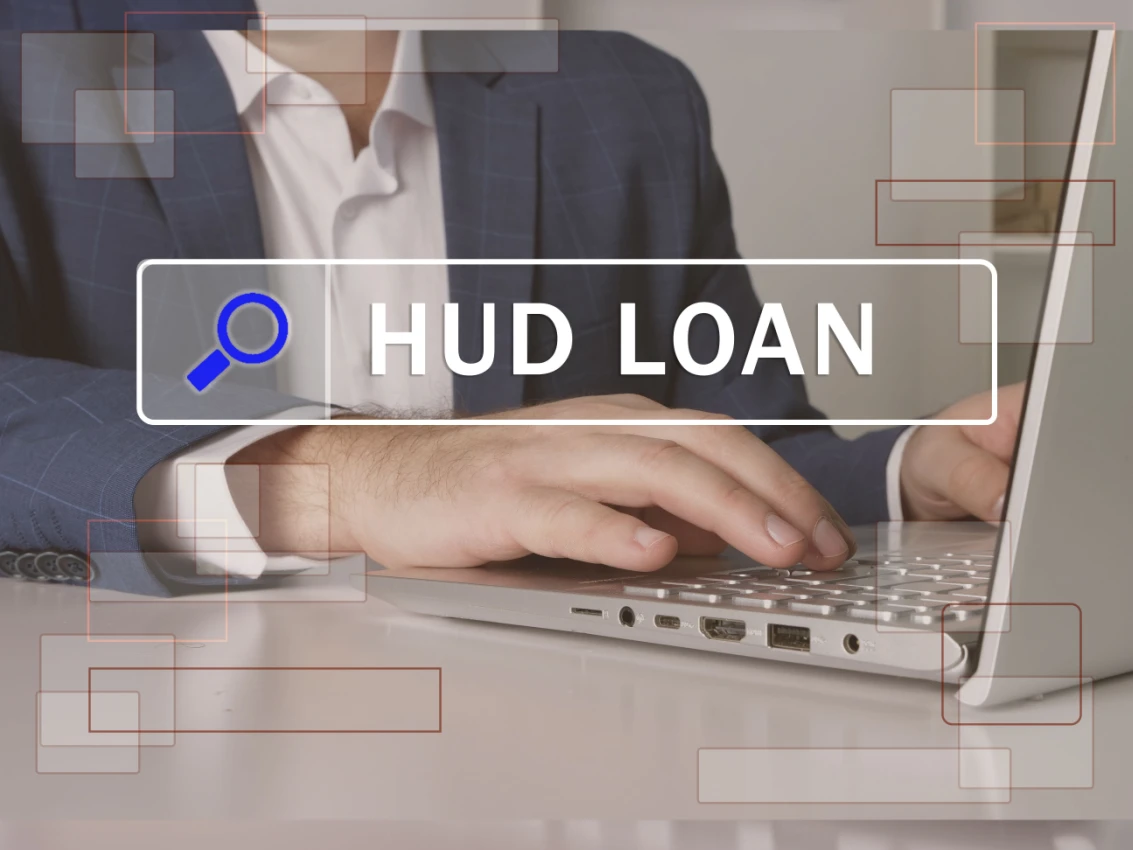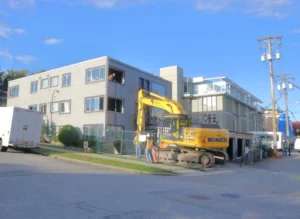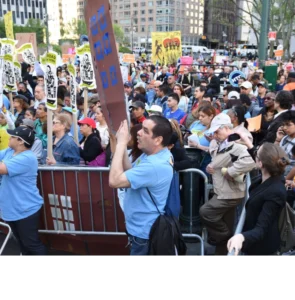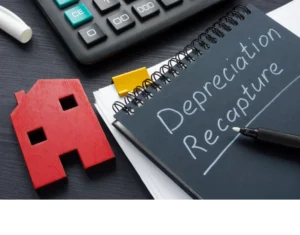Home·Property Management·HUD Financing for Multifamily
Understanding the Benefits and Requirements

HUD Financing for Multifamily
Are you searching for a smarter way to finance multifamily investments? HUD multifamily loans might be the solution you’ve been looking for.
These loans offer benefits like lower interest rates, higher loan-to-value ratios, and longer amortization periods—ideal for maximizing returns while supporting affordable housing. Whether you’re planning new construction, a major renovation, or refinancing, HUD loans provide unique opportunities for investors focused on long-term growth.
From understanding eligibility requirements to exploring specialized programs like HUD 221(d)(4) or 223(f), this guide unpacks what you need to know.
You’ll discover strategies to leverage HUD financing effectively and insights into how it can elevate your investment strategy.
Key Takeaways
-
HUD multifamily loans offer lower rates and higher LTV ratios
-
These loans support long-term investments in affordable housing
-
HUD financing can be used for various multifamily property transactions
HUD Financing Multifamily
HUD multifamily financing offers unique opportunities for real estate investors.
These loans come with attractive terms and support affordable housing initiatives, particularly for affordable properties through programs like the Low-Income Housing Tax Credit (LIHTC) and the Rental Assistance Demonstration (RAD) program.
Let’s explore the key aspects of this financing option.
Role of the Department of Housing and Urban Development
The Department of Housing and Urban Development (HUD) plays a crucial role in multifamily financing. HUD’s mission is to create strong, sustainable communities and quality affordable homes for all.
To achieve this, HUD offers loan programs for multifamily properties. These programs support both new construction and rehabilitation of existing buildings. HUD works with approved lenders to provide these loans. Current HUD multifamily borrowers can access supplemental loans and refinancing opportunities to improve property conditions and financial performance.
You’ll find that HUD’s involvement helps keep interest rates low and terms favorable. This makes it easier for you to invest in and maintain affordable housing options.
Overview of HUD Multifamily Loans
HUD multifamily loans are designed to finance various types of properties. These include apartments, senior housing, and healthcare facilities.
HUD offers several loan programs, each with specific purposes:
-
Section 221(d)(4) for new construction or substantial rehab
-
Section 223(f) for acquisition or refinancing
-
Section 232 for healthcare facilities
FHA multifamily financing includes HUD 223(f) loans, which are often compared to other types of multifamily loans insured by FHA, highlighting their diverse applications for acquiring and refinancing multifamily properties.
These loans typically have longer terms, up to 35-40 years. You’ll also enjoy fixed interest rates, which can help with long-term planning.
HUD loans often allow for higher loan-to-value ratios compared to conventional financing. This means you can borrow more of the property’s value.
Get a Free Multifamily Loan Quote
Access Non-Recourse, 10+ Year Fixed, 30-Year Amortization
Advantages of HUD Financing for Investors
As a real estate investor, HUD financing offers several benefits:
-
Lower down payments: You might need as little as 3% down for market-rate housing. For affordable housing projects, you could even qualify for 0% down.
-
Non-recourse loans: This protects your personal assets if the loan defaults.
-
Competitive interest rates: HUD-backed loans often have lower rates than traditional financing.
-
Higher loan amounts: HUD loans typically start at $2 million and have no defined maximum loan amount, allowing you to borrow up to 83.3% of the value for market-rate properties and up to 90% for affordable housing.
-
Longer amortization: This can improve your cash flow by spreading payments over a longer period.
Eligibility and Application Process
HUD financing for multifamily properties offers unique opportunities for real estate investors. The process involves specific eligibility criteria and application steps. Let’s explore the key requirements and procedures.
Eligible Properties and Borrowers
HUD multifamily loans cater to various property types, including multifamily real estate. Apartment buildings with 5+ units qualify, including market-rate, affordable, and senior housing. Assisted living facilities and nursing homes may also be eligible.
Borrowers can be individuals, partnerships, or corporations. You must have a good credit history and show financial capacity. HUD looks for experienced property owners or managers.
Non-profit organizations can apply too. They often focus on affordable housing projects.
Remember, the property must meet HUD’s standards for physical condition and financial performance.
Understanding the Application Steps
The HUD loan application process can be lengthy, but it’s worth it for the favorable terms. Here’s a simplified breakdown:
-
Choose a HUD-approved lender
-
Submit initial paperwork
-
Attend a concept meeting with HUD
-
Complete full application package
-
HUD reviews and issues commitment
-
Close the loan
Concept meetings are mandatory for new construction and some refinancing deals. They help you understand HUD’s expectations early on.
Be prepared for a timeline of 4-6 months or more. The wait pays off with better rates and terms.
Required Documentation and Third-Party Reports
HUD loans demand thorough documentation. You’ll need:
-
Property financial statements
-
Rent rolls
-
Personal financial statements
-
Management certifications
Third-party reports are crucial. These typically include:
-
Appraisal
-
Property Condition Assessment
-
Environmental Site Assessment
-
Market Study
These reports help HUD assess the property’s value and risks. They also guide your renovation plans if needed.
Prepare for upfront costs. These reports can be pricey, but they’re essential for loan approval.
Work closely with your lender to gather all required items. They’ll guide you through the process and help you avoid common pitfalls.
Key HUD Multifamily Loan Products
HUD offers several loan products tailored for multifamily properties. These programs cater to different needs, from new construction to refinancing existing properties. Let’s explore the main options available to you.
HUD 221(d)(4) for New Construction and Substantial Rehabilitation
The HUD 221(d)(4) program is your go-to for new construction or major renovations. It provides non-recourse, fixed-rate financing for up to 40 years. You’ll appreciate the high loan-to-value ratios – up to 85% for market-rate projects and 90% for affordable housing.
Key benefits:
-
Low interest rates
-
Long amortization periods
-
No balloon payments
Keep in mind, the approval process can take 6-12 months. But for long-term investors, the wait is worth it. You’ll lock in favorable terms that protect you from market fluctuations.
HUD 223(f) for Acquisition and Refinancing
When you’re looking to buy or refinance an existing property, the HUD 223(f) loan is your best bet. It offers up to 35-year terms with fixed rates. You can borrow up to 83.3% of the value for market-rate properties or 87% for affordable housing.
This program allows you to:
-
Lower your monthly payments
-
Pull out equity for renovations
-
Consolidate multiple loans
The 223(f) is perfect if you want to improve your cash flow without the hassle of new construction. Just remember, properties must be at least 3 years old to qualify.
Specialized Programs for Affordable Housing
HUD has targeted programs to boost affordable housing supply. The Low-Income Housing Tax Credit (LIHTC) program can be combined with HUD financing for even better terms. You’ll find options like:
-
Higher loan-to-value ratios
-
Lower mortgage insurance premiums
-
Streamlined processing
The Rental Assistance Demonstration (RAD) Program is another tool. It helps convert public housing to Section 8 contracts, making private financing easier. These programs let you create stable, long-term investments while serving communities in need.
Financing Terms and Conditions
HUD financing for multifamily properties offers unique advantages for real estate investors. These loans come with favorable terms that can make your investment more profitable in the long run.
Loan Amounts and Terms
HUD multifamily loans can cover up to 83.3% of the property value for market-rate properties. For affordable housing projects, this can go up to 90%. The loan terms are exceptionally long, often reaching 35 to 40 years.
These extended terms give you more time to build equity and manage your cash flow. You’ll have lower monthly payments compared to conventional loans with shorter terms.
HUD loans are also fully amortizing. This means you won’t face a balloon payment at the end of the term. It’s a big plus for long-term investors who want to avoid refinancing risks.
Interest Rates and Mortgage Insurance Premiums
HUD multifamily loans offer competitive fixed interest rates. As of December 2024, rates start from 5.62% for the 223(f) program with a 35-year fixed term. These rates are often lower than what you’d find with conventional lenders.
You’ll need to pay a mortgage insurance premium (MIP) with HUD loans. The upfront MIP is usually around 1% of the loan amount. There’s also an annual MIP, typically 0.45% to 0.65% of the outstanding loan balance.
While the MIP adds to your costs, the lower interest rates and longer terms often make up for it. You’ll want to crunch the numbers for your specific project to see how it compares to other financing options.
DSCR Requirement and Loan-to-Value Ratios
HUD loans have some of the most flexible debt service coverage ratio (DSCR) requirements in the industry. For most programs, you’ll need a DSCR of 1.11 to 1.15. This is lower than what many conventional lenders require.
The loan-to-value (LTV) ratios are also quite generous. You can get up to 83.3% LTV for market-rate properties and 90% for affordable housing projects. Some programs even allow up to 95% LTV for nonprofit borrowers.
These high LTV ratios mean you can finance a larger portion of your project with the HUD loan. You’ll need less cash upfront, which can free up capital for other investments or improvements to the property.
Supplemental Financing Options
Supplemental loans provide financial support for existing borrowers, particularly those with HUD multifamily debt, to fund property improvements and secure additional financing for various capital improvements.
HUD offers additional financing options to support multifamily projects. These tools can help you maximize funding and create more affordable housing units.
Using Tax-Exempt Bonds and LIHTC
ax-exempt bonds and Low-Income Housing Tax Credits (LIHTC) are powerful tools for financing affordable housing. You can use these alongside HUD loans to boost your project’s funding.
Tax-exempt bonds offer lower interest rates than conventional loans. This saves you money over time. LIHTC provides equity to your project, reducing the amount you need to borrow.
To use these options, your project must include a certain percentage of affordable units. This varies by location and program rules. Make sure to check the requirements in your area.
Bridge Loans and Other Conventional Products
Bridge loans can help you cover short-term financing needs while waiting for HUD approval. These loans typically have higher interest rates but offer quick funding.
Fannie Mae loans, on the other hand, often feature faster closing times compared to HUD loans and offer various types of financing options, making them a competitive choice for borrowers in the multifamily real estate market.
You might use a bridge loan to:
-
Purchase a property quickly
-
Start renovations before HUD financing closes
-
Cover unexpected costs during the HUD application process
Other conventional products, like lines of credit, can provide flexibility. You can use these to manage cash flow or fund smaller improvements.
Costs Associated with HUD Loans
HUD loans for multifamily properties come with specific expenses you need to plan for. These costs can impact your overall investment strategy and cash flow projections.
Closing Costs and Fees Analysis
HUD loans typically have higher upfront costs compared to conventional financing. You’ll face application fees, inspection fees, and mortgage insurance premiums. Legal fees can add up too, as HUD loans require extensive documentation.
Here’s a breakdown of common closing costs:
-
Application Fee: 0.3% of loan amount
-
Inspection Fee: $3,000 – $5,000
-
Mortgage Insurance Premium: 0.25% – 1.05% of loan amount
-
Legal Fees: $10,000 – $30,000
Don’t forget about ongoing costs. You’ll pay annual mortgage insurance premiums and potential servicing fees. These extras can affect your long-term returns, so factor them into your calculations.
HUD Multifamily Loan Requirements
HUD loans often allow for higher loan-to-value ratios than conventional loans. This means you might need a smaller down payment. For some HUD programs, you could put down as little as 3.5% for acquisition or 10% for refinancing.
But there’s a catch. HUD has strict financial requirements:
-
Debt Service Coverage Ratio: Usually 1.11 – 1.20
-
Working Capital: 2-4% of loan amount
-
Operating Deficit Reserve: 3-6 months of expenses
You’ll need to prove you have enough cash reserves to cover these requirements. This can tie up a significant amount of your capital. But the trade-off is often worth it for the lower interest rates and longer loan terms HUD offers.
Refinancing Multifamily Properties with HUD
HUD refinancing options offer unique benefits for multifamily property owners. These programs provide lower interest rates and higher loan-to-value ratios compared to conventional loans.
Benefits of Refinancing with HUD Loans
Refinancing with HUD loans can significantly reduce your monthly mortgage payments. You’ll enjoy lower interest rates, often fixed for the entire loan term. This stability helps you plan your finances more effectively.
HUD loans typically offer higher loan-to-value ratios, sometimes up to 85%. This means you can potentially borrow more against your property’s value. Non-recourse financing is another perk, protecting your personal assets.
Longer amortization periods, often up to 35 years, can further decrease your monthly payments. This improved cash flow allows you to invest in property improvements or expand your portfolio.
Specialized HUD Refinancing Programs
HUD offers several tailored refinancing options for multifamily properties. The HUD 223(f) program is popular for refinancing existing properties. It provides competitive terms for both market-rate and affordable housing projects.
For properties already with HUD-insured mortgages, the 223(a)(7) program offers a streamlined refinancing process. You can quickly take advantage of lower interest rates without extensive paperwork.
The HUD 241(a) program allows you to borrow additional funds for property improvements. This can be a great way to upgrade your property and increase its value while maintaining favorable loan terms.
Frequently Asked Questions About HUD Financing Multifamily
What are the requirements to qualify for HUD financing for multifamily properties?
HUD financing requirements for multifamily properties include property eligibility, borrower qualifications, and financial criteria. You’ll need a property with at least 5 units, a strong credit history, and sufficient net worth. The property must meet HUD’s standards for physical condition and occupancy. HUD also looks at your management experience and the project’s financial feasibility.
How do the loan rates for HUD multifamily financing compare to conventional loan rates?
HUD multifamily financing rates are typically lower than conventional loan rates. You can expect interest rates that are 0.5% to 1% below market rates. This difference can lead to significant savings over the life of the loan. HUD loans also offer longer terms and higher loan-to-value ratios, making them attractive for long-term investors.
What are the steps to apply for a HUD multifamily construction loan?
Applying for a HUD multifamily construction loan involves several steps. You’ll start by finding a HUD-approved lender. Next, you’ll submit a pre-application package with project details. If approved, you’ll complete a full application with in-depth financial and construction plans. The process can take 6-12 months, so patience is key.
Can FHA loans be applied to multifamily property purchases, and if so, how?
FHA loans can be used for multifamily property purchases, but with limitations. You can use an FHA loan to buy a property with up to four units if you plan to live in one of them. For larger properties, you’ll need to look at HUD’s multifamily programs like the 221(d)(4) for new construction or substantial rehabilitation.
What are the advantages and disadvantages of securing HUD financing for multifamily properties?
Advantages of HUD financing include lower interest rates, higher loan-to-value ratios, and non-recourse loans. You’ll also benefit from longer amortization periods. Disadvantages include a lengthy approval process, strict property standards, and ongoing compliance requirements. The extra paperwork and time can be challenging, but the long-term benefits often outweigh these drawbacks.
What criteria does HUD use to evaluate potential lenders for multifamily financing?
HUD evaluates potential lenders based on their experience, financial stability, and track record. You’ll need to demonstrate expertise in multifamily lending and a solid understanding of HUD programs. HUD also looks at your company’s net worth, liquidity, and quality control processes. Meeting these criteria allows you to participate in HUD’s multifamily programs as an approved lender.
HUD Financing for Multifamily – Conclusion
HUD financing for multifamily properties is a powerful tool for investors seeking competitive terms and support for long-term growth.
With features like lower interest rates, higher LTV ratios, and non-recourse terms, HUD loans offer unique advantages for both market-rate and affordable housing projects. Programs like 221(d)(4) and 223(f) cater to a variety of needs, from new construction to refinancing.
Success requires careful planning, meeting HUD’s eligibility criteria, and navigating the detailed application process. While the steps may seem complex, the long-term benefits make the effort worthwhile. By leveraging HUD financing, you can secure more funding, improve cash flow, and contribute to the development of sustainable communities.
Source: Willowdale Equity
Get AAOA's Newsletter
Property Management News Categories
- Affordable Housing
- Collections
- COVID-19
- Eviction
- Fair Housing
- Financing
- Going Green
- Government
- Investing
- Landlord Forms
- Landlord Quick Tips
- Latest News
- Leasing
- Legal Brief
- Legal News
- Maintenance
- Make Extra Money
- Marketing Vacant Units
- Property Management
- Real Estate Investing
- Real Estate Trends
- Remodel and Repair
- Rent Magazine
- Security Deposit Alternatives
- Social Media
- Tax Tips
- Technology
- Tenant Screening
- Uncategorized













 Accessibility
Accessibility